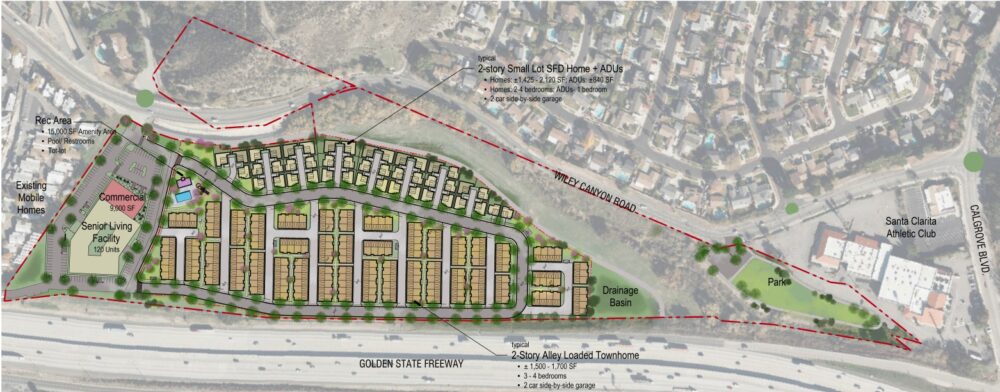
The city of Santa Clarita’s Planning Division confirmed Wednesday an appeal has been filed regarding the Planning Commission’s Sept. 16 approval of the Wiley Canyon Mixed-Use Project, which now sends the project to the City Council for review.
The plans for the former home of the Smiser Mule Ranch now call for 232 condos in detached, two-story units and 120 assisted living units on about 31 acres between Hawkbryn Avenue and Calgrove Boulevard, just east of Interstate 5.
While the opposition acknowledged the current plan is much smaller than past ones for the property, the reduction doesn’t alleviate neighborhood concerns about fire safety, air quality and daily traffic impacts, according to Annette Lucas, who lives near the project.
“Neighbors of the old Smiser Mule Ranch property have been working for decades to ensure that development of the property would be suited for the area and conform to the (city) general plan,” Lucas wrote in a letter Wednesday. “They opposed a 10-story hotel there in 2007 and then helped rewrite and update the general plan to make sure future development would conform with the neighborhood, that local roads would be able to manage the traffic and that adequate infrastructure was available for fire and sheriff service and schools.”
Now those efforts are being ignored for poorly planned roundabouts and noncompliant road design, Lucas said in a follow-up phone conversation Wednesday.
She said the coalition of Calgrove Corridor Neighbors had 120 addresses on the email group. The appeal was filed by a resident who lives within 500 feet of the project, which is why it was subject to a $1,500 fee.
“The project is in a Very High Fire Hazard Severity Zone,” according to Lucas’ email. “The community is especially concerned that no fire station will be built in this project. The closest station is No.124, in Stevenson Ranch, approximately 3 miles away.”
The anticipated air-quality impacts also exceed the health standards set by air-quality officials, according to their letter.
Under state law, the city must approve the project by its fifth public hearing, which would be the appeal hearing in front of the City Council, unless there are violations of the city’s objective standards, which staff have not reported.
Tom Clark, the project’s principal, did not answer a call seeking a comment on the appeal.
In addition to paring down the scale of past plans, the developer has spent several hundred thousand dollars over what was previously anticipated for the project to address hundreds more concerns than city staff anticipated on the project, according to past reports.



